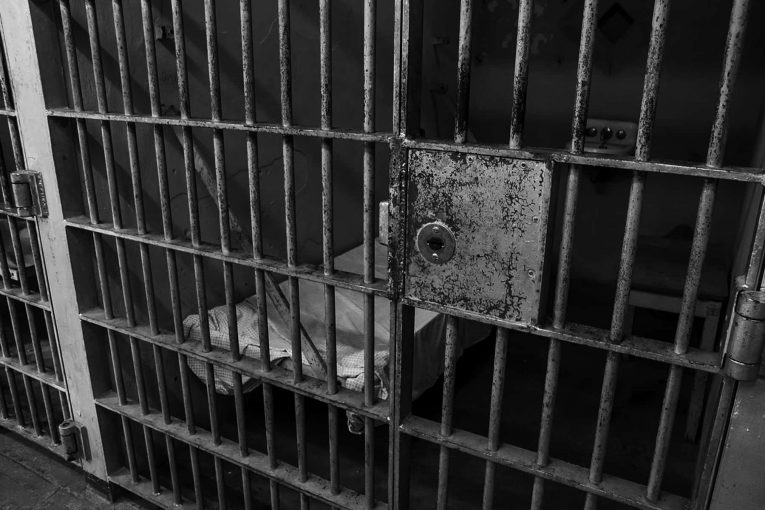


by Jiles Wallace
For most prisoners Halloween is 365 days a year. Every day we wear a mask and pretend to be who we are expected to be. We repeat slogans like “hearts of stone, minds of steel” to insinuate that we have no emotions or conscience. We wear a constant grimace on our faces to communicate our disgust and disapproval of others.
We ball up our fists and puff up our chests to make ourselves appear more dangerous than we really are. We wear these masks as camouflage to protect ourselves. This hypermasculinity is reflected in the norms of inmates, often called the “prison code.”
However, the root cause of hypermasculinity lies not in prison, but in American culture itself. In A Review of Self-Help and Mutual Support Groups for Men, E.S. Mankowski and C.S. Silvergleid said, “hegemonic masculinity in American culture has been found to contradict basic human needs and desires for intimacy and emotional expression, creating stress and conflict between men’s core selves and social expectations.”
This stress and conflict between men’s core selves and social expectations is exacerbated by the conditions of prison. Inmates have the lowest status in American society, are unable to express heterosexuality, have limited autonomy, no  freedom, and often are likely to be uneducated.
freedom, and often are likely to be uneducated.
Thus inmates seeking interactional confirmation of their masculine status exaggerate their manhood to compensate for the loss of identity. In his essay “Cultural Construction of Manhood in Prison,” J. Phillips writes “without the resources normally available for the enactment of manhood, men in prison are forced to reconstitute their identity and status using the limited available resources.”
Some of the ways in which men in prison construct and reconstruct their identity are demonstrated in what Sabo, Kupers, and London refer to in the book Prison Masculinities as the prison code: “Suffer in silence. Never admit you are afraid. … Do not snitch. … Do not do anything that will make other prisoners think you are gay, effeminate, or a sissy. Act hard. … Do not help the authorities in any way. Do not trust anyone. Always be ready to fight, especially when your manhood is challenged. … One way to avoid a fight is to look as though you are willing to fight. As a result, prisoners lift weights compulsively, adopt the meanest stare they can muster, and keep their fears and their pain carefully hidden beneath a well-rehearsed tough-guy posture.”
Those who resist conforming to the norms of prison culture are seen as weak and unmanly. Kindness, gentleness, care, sadness, and love are considered feminine qualities. There are certain actions and moods one has to project in prison, and failing to do so could result in dangerous consequences. A humorous example of this hypermasculinity can be illustrated by a recent encounter I had with my cellmate.
As part of an assignment for an English class, I had to read Beauty (Re)discovers the Male Body by Susan Bordo. When I got to page 132, there was an image of an extremely fit and attractive man posing in Calvin Klein boxer briefs. When I first turned to this page my initial reaction was to turn the page, and look back over my shoulder to see if anyone was watching. I felt beyond uncomfortable staring at a man posing in tight underwear.
It was very awkward to say the least. Then I read the words of Susan Bordo and it became even more awkward. Her description of the sexual elements the picture has to offer was extremely graphic, and something about it really bothered me. I was reminded of the time a female friend of mind grabbed my butt and squeezed it—something about it upset me, but I don’t know why.
This Calvin Klein ad and the words of Susan Bordo brought up the same emotions in me. Once I got over the initial shock I was able to put my cultural biases to the side and view the image unabashedly. It wasn’t long before I found myself wondering how I would look in those boxer briefs. At some point I became self-conscious and started to take a personal inventory of all the body parts I need to work on improving in order to look like the man in the Calvin Klein ad.
Around that time my cellmate came back in and caught me staring at the image of the extremely fit and attractive man posing in Calvin Klein boxer briefs. I was so caught up in my moment of vanity that I didn’t even notice my cell door opening or closing. Needless to say, I was just as startled at getting caught looking at the image as my cellmate was at catching me looking at it.
I think I was more ashamed at getting caught than I was about looking at the ads. In Beauty (Re)discovers the Male Body, Susan Bordo quoted Sartre’s classic example of being caught peeking though a keyhole by another person: “It isn’t until those other eyes are upon you that truly feel not just the wrongness of what you are doing, but—Sartre would argue—the very fact that you are doing it.”
Getting caught in my moment of vanity was exacerbated by the hypermasculinity of prison culture. Even with the explanation of my writing assignment, my cellmate still looked at me with disapproval in his eyes. This only added to my shame and the conflict between my core self and social expectations.
Masculine prison culture exacerbates the problem of getting caught doing something abnormal or wrong. Where does the hypermasculine prison culture come from, and what happens to those who resist it?
Republished from “Perspectives from the Cell Block: An Anthology of Prisoner Writings” – edited by Joan Parkin in collaboration with incarcerated people from Mule Creek State Prison.
